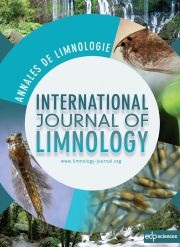Article contents
Marthamea beraudi (Navás) and its European congeners (Plecoptera : Perlidae)
Published online by Cambridge University Press: 15 August 2009
Abstract
The west palearctic species of Marthamea are reviewed. Adults are distinct from other European genera, but larvaeand eggs are very similar to those of genus Phasganophora. M. beraudi (Navás) (Antilebanon Mts.) is re-instated as a species distinct from M. vitripennis (Burmeister). A lectotype of the latter is designated. Its range includes south-west, centraland south-east Europe. Records from Syria are unconfirmed, those from Israel are erroneous. The species has in thepast been confused with larvae of a Phasganophora species. M. selysii (Pictet) has brachypterous males and is known fromSpain north to Meuse and Moselle rivers. Keys to adults and larvae are presented, but larval M. selysii and M. vitripenniscan presently not be separated. The European Marthamea species are inhabitants of the potamon and are endangered ;they are presently already extinct in parts of their former ranges.
Information
- Type
- Research Article
- Information
- Copyright
- © Masson, 1984
- 6
- Cited by

